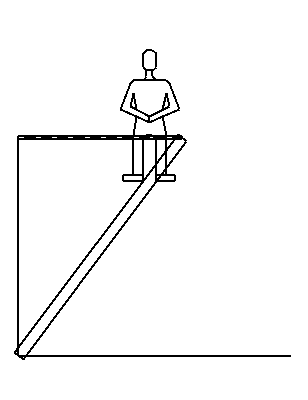
American Journal of Computational Linguistics, Microfiche 53, 1976.

The foot of a ladder rests against a vertical wall and on a horizontal floor. The top of the ladder is supported from the wall by a horizontal rope 30 ft long. The ladder is 50 ft long, weighs 100 lb with its center of gravity 20 ft from the foot, and a 150 lb man is 10 ft from the top. Determine the tension in the rope.In order to understand such a problem, it is necessary to build an internal model of the problem in which the various objects and their interrelationships are adequately represented. Many of the relationships and features of the objects are not specified explicitly in the problem statement, but must be inferred by using common sense knowledge of what is usual. In the above example, we assume that the man is standing on the ladder, although this is not explicitly stated. Thus, the understanding of a physics problem is an active process in which the sentences of the problem statement are used to guide the construction of a model which represents the relationships and features of objects with much greater detail and specificity than they are specified in the original problem statement.
In this thesis, we investigate ways in which the meanings of phrases and sentences may be understood and related to a developing model of the problem, using common sense knowledge (represented by computer programs) to aid the understanding process. Ways of representing objects and their relationships are developed. These representations, which are originally created in response to the sentences in the problem statement, are further elaborated by processes which construct a geometric model of the problem, associate canonical objects (such as a point mass) with physical objects (such as a person), write and solve equations which describe the interactions of the objects, and construct a diagram of the problem.
The techniques used in ISAAC have potential application in providing a natural language interface between specialist programs and users who are not computer professionals, and in computer programs for teaching physics and other technical subjects.
On-line Demonstration of Isaac: Solve Physics Problems stated in English.